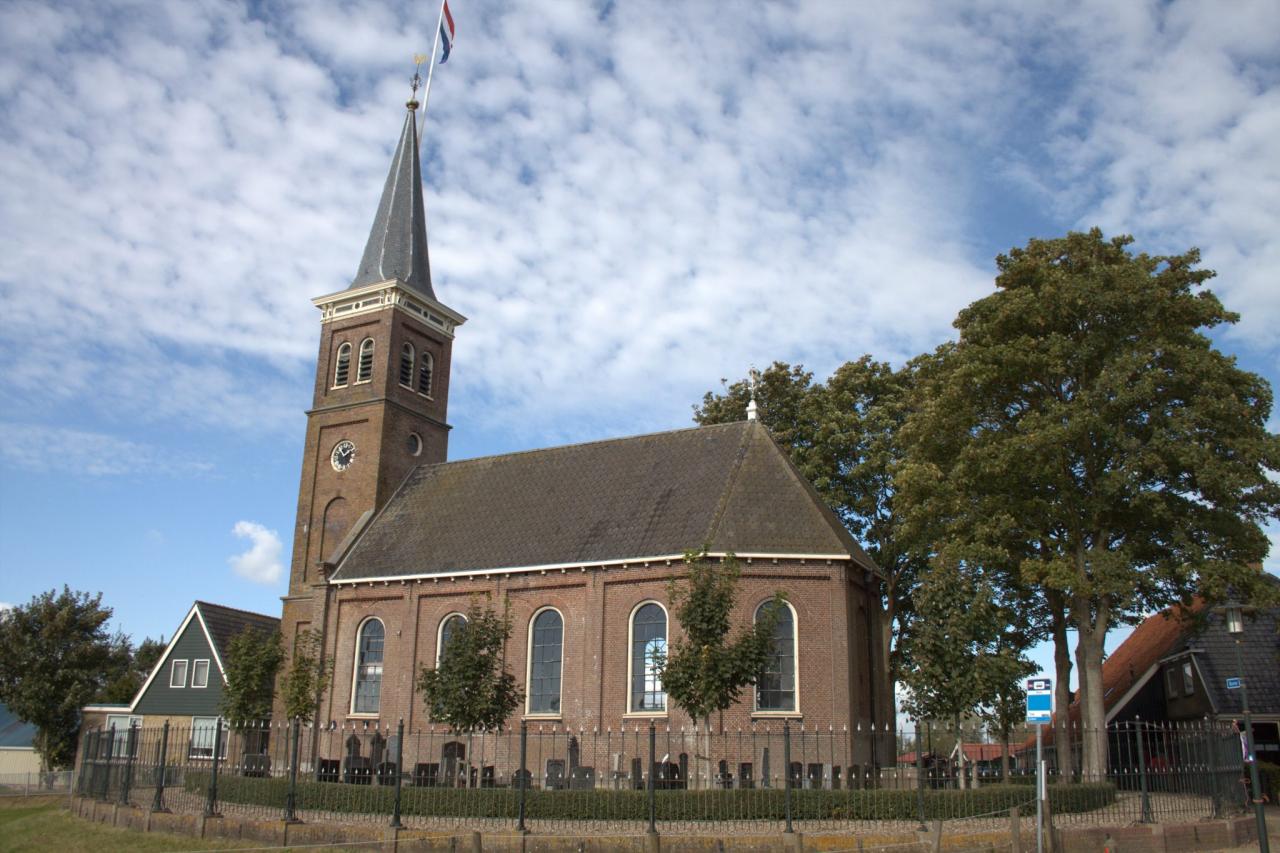Dedgum Church

Nothing is left of the old church of Dedgum, except the gate of Aijlva from 1707 - now part of the Fries Museum. The current church of Dedgum dates from the last half of the nineteenth century - but has special elements.
About this building
The reformed church of Dedgum is situated on a mound in the village of Dedgum, between the farm and the center of the village. It is a hall church with a slender, high tower with a constricted, eight-sided spire on the west side. The church is four engraved windows long, with a three-sided closure on the east side - of which only the middle wall surface has no window as the pulpit stands here. The walls, with plastered plinths, are made of brown brick and each bay has a rectangular arch with an arched window housed in a wooden frame with a cast-iron window. The roof covering is special. With the exception of the north-east roof cover, its consists of unglazed roof tiles. The tower is made up of three sections, decorated per layer with rectangular and arc-shaped banks. The middle section is the largest. The clock dial is linked to the mechanized, wrought-iron tower clock that dates from around 1625. The two narrow arc-shaped reverberation holes that determine the image per façade surface are distinct features of the of the last building layer. The organ was completed three years after the completion of the building. It was supplied by L. van Dam and Sons and is still used on festive occasions.


